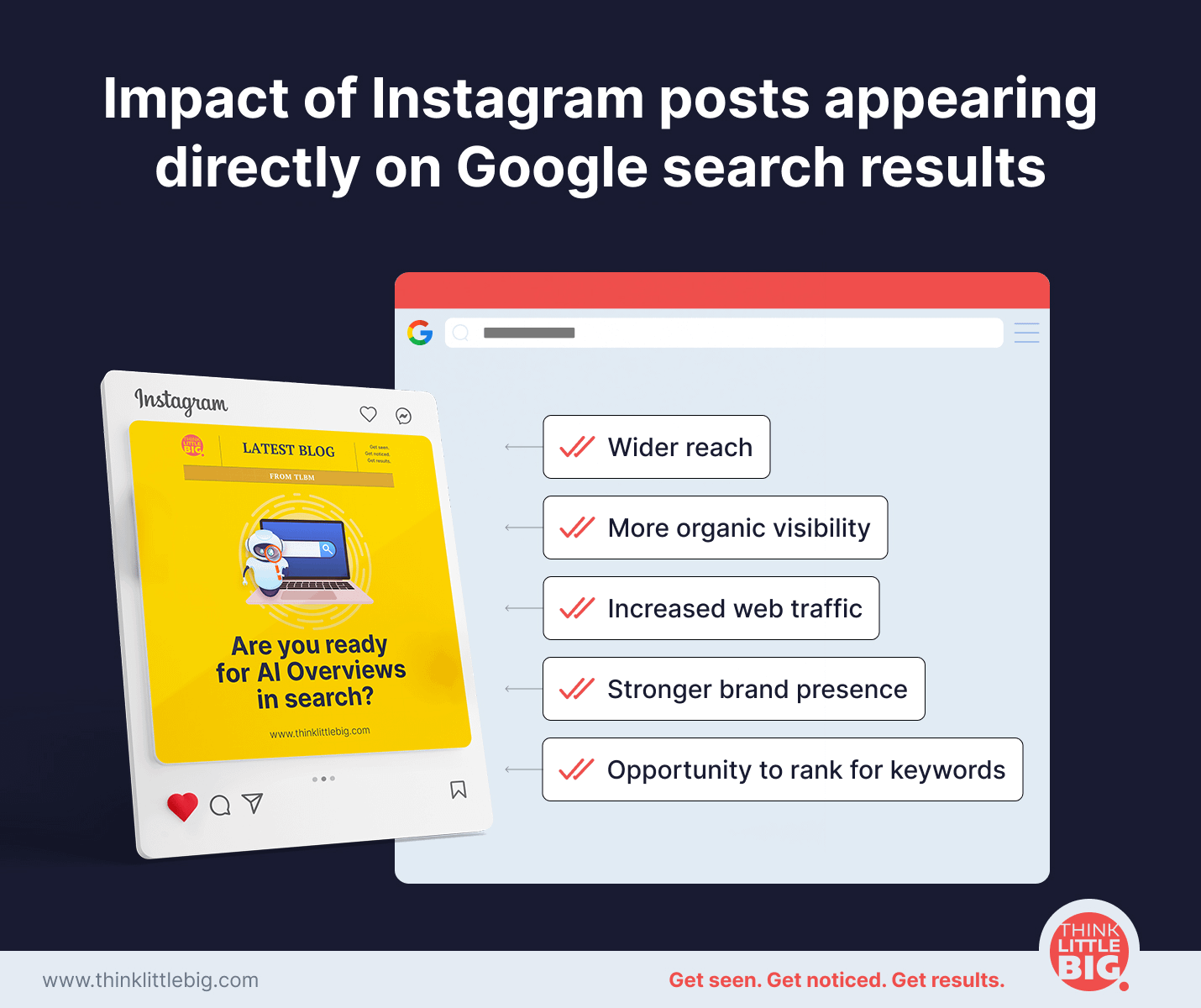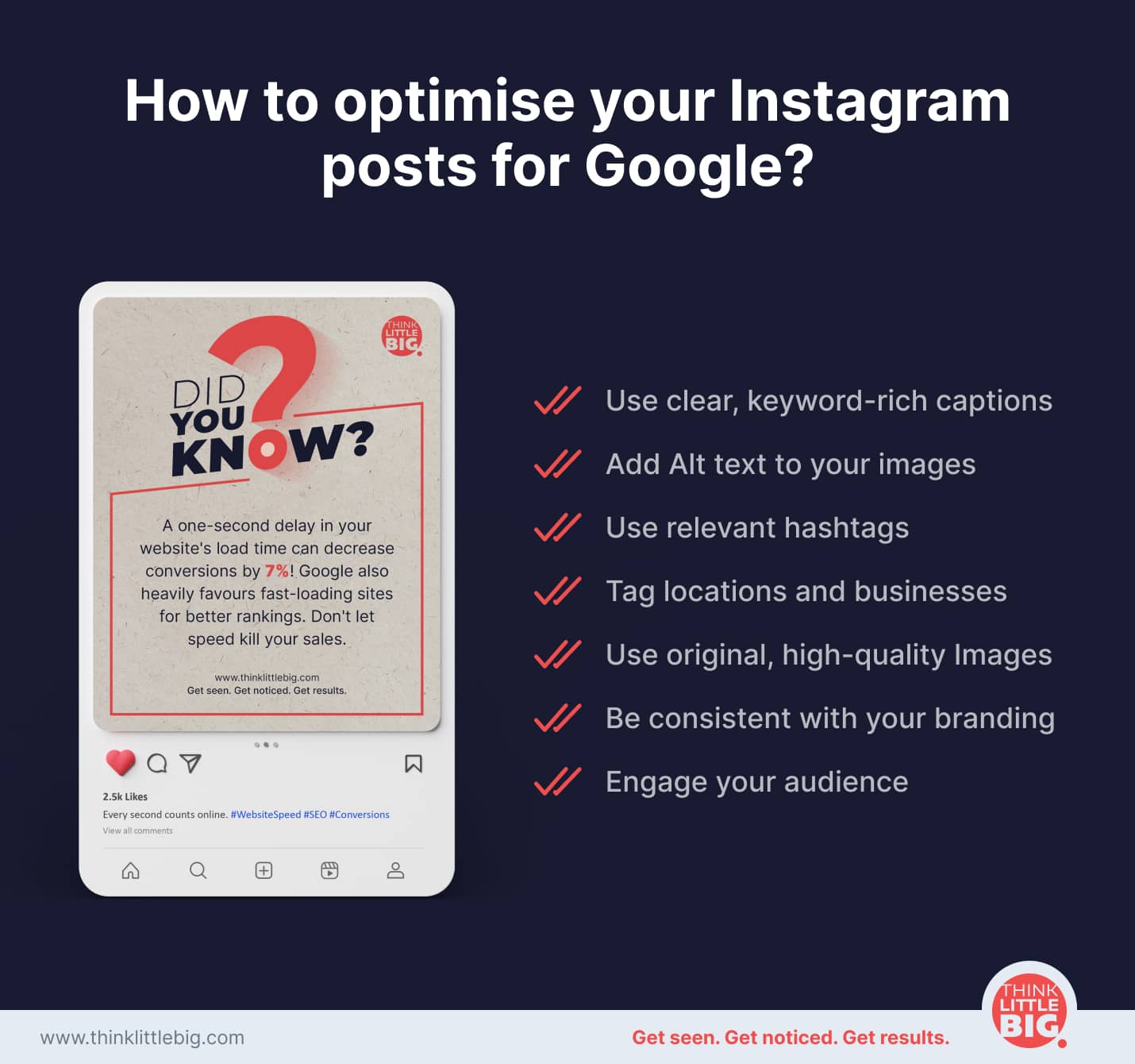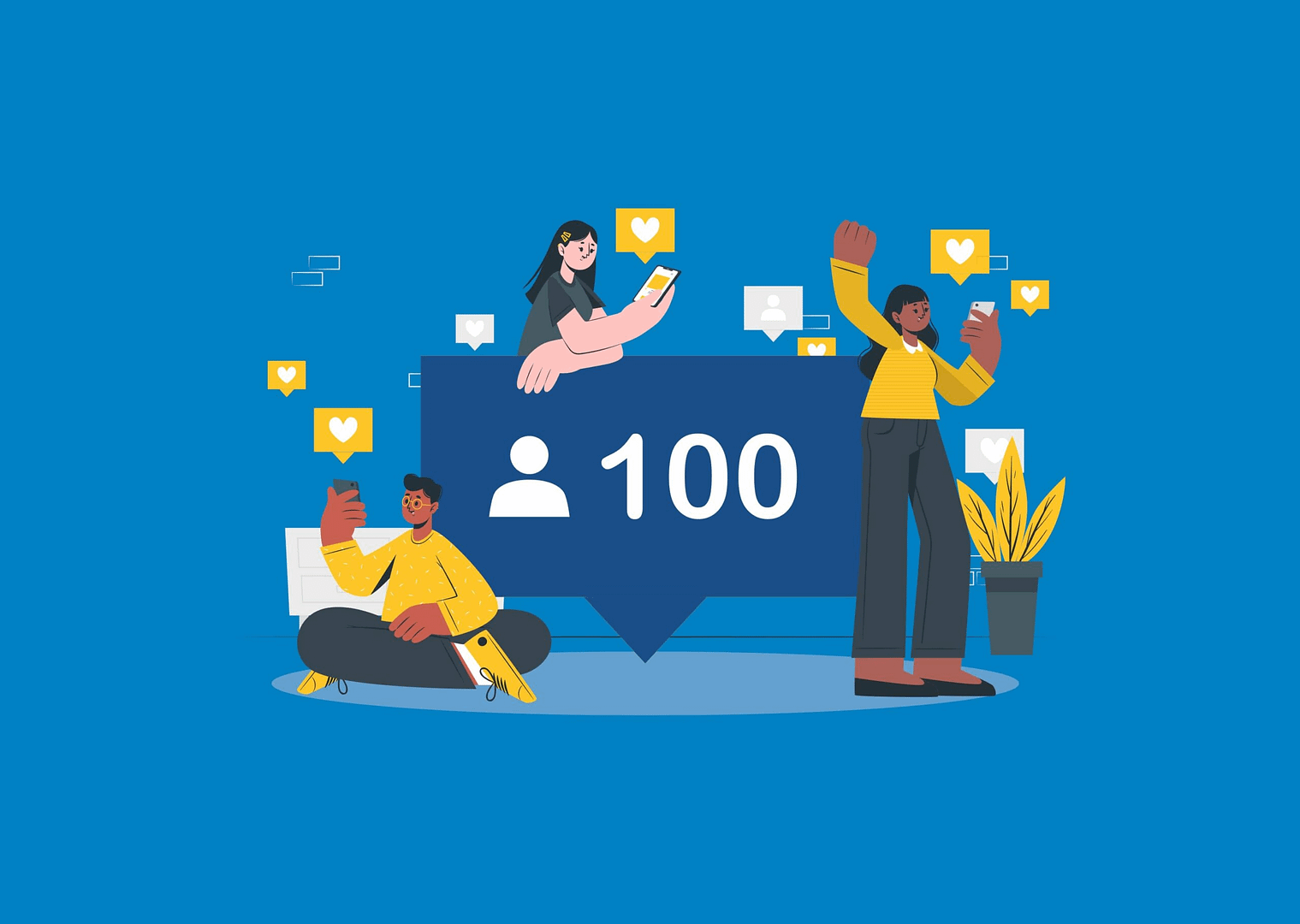Starting July 2025, Instagram posts will begin appearing directly in Google Search results, thanks to a new agreement between Google and Meta (Instagram’s parent company). This means that public Instagram content — including images, Reels, and carousels — will be indexed and displayed by Google, making it accessible to anyone searching, even if they don’t use Instagram.
Until now, Instagram content has mainly been confined to the app or its web platform. But this development breaks that boundary, making your posts discoverable to a much wider audience via Google’s global search engine.
For businesses, especially those utilising Instagram for brand visibility, this represents a significant shift. It not only expands the reach of your posts but also reshapes how you should approach social media marketing and Search Engine Optimisation (SEO) moving forward.
What’s changing from July 2025?
Google has confirmed it will begin indexing and displaying Instagram content — including image posts and Reels — directly in its search results.
This means:
- Instagram posts will show up on Google, just like websites, news articles, or YouTube videos.
- Users searching on Google may now see relevant Instagram content in search snippets or the “Images” and “Videos” tabs.
- Content creators, influencers, and brands can reach wider audiences outside the Instagram platform.
Why is this happening?
Google’s aim is to provide users with the most relevant and up-to-date content possible — and that includes social media.
Instagram holds a vast amount of user-generated content. People search Google for trends, products, fashion, news, and entertainment — and much of that lives on Instagram.
By indexing this content:
- Google enhances the variety and relevance of its search results.
- Instagram gets more web visibility and potentially more traffic.
- Businesses have more opportunities to appear in search results without needing a website.
It’s a win-win for platforms and users — and now, it can be a win for your business too.
Stay in the know
Keep on top of how the latest marketing, SEO, branding and design tips can be used to
grow your business – delivered straight to your inbox.
What kind of Instagram posts will show on Google?
Not all Instagram content will be indexed right away. Google is likely to prioritise:
- Public posts from business and creator accounts
- Posts with high engagement (likes, comments, shares)
- Reels and short videos
- Image carousels with captions
- Content that includes hashtags, keywords, and geo-tags
Private or restricted content won’t be visible in Google search. Additionally, posts that include spammy hashtags or misleading captions may not appear, as Google’s algorithm continues to evaluate quality and relevance.
What does this mean for your business?
This update unlocks significant potential for small businesses, particularly those with active Instagram accounts but limited online presence.
Here’s what it means for you:
1. Wider reach
Your posts can reach people beyond your followers. Anyone searching for a related topic on Google may now find your Instagram post.
2. More organic visibility
You don’t need to pay for ads to be seen. A well-optimised post could appear in search results, just like a blog or product page.
3. Increased web traffic
Your profile could become a gateway to your business. Your Instagram content can now drive traffic directly from Google Search to your profile or website.
4. Stronger brand presence
Appearing on Google helps build trust. Customers may be more likely to contact a business they see across multiple platforms.
5. Opportunity to rank for keywords
Until now, SEO has focused on websites and blogs. Now, even your Instagram content can help you rank for keywords like “eco-friendly candles UK” or “fitness studio in Brighton”.
How to optimise your Instagram posts for Google?
To take advantage of this change, you need to optimise your Instagram posts — just like you do for your website content.
Here’s how:
1. Use clear, keyword-rich captions
Write captions that answer potential user questions and align with common search queries. What problem does your product or service solve? Address it directly.
Provide enough context in your captions so that Google can understand what your image or video is about.
2. Add Alt text to your images
Instagram supports the addition of alt text to enhance accessibility. This helps visually impaired users, and now it could help Google understand your image better.
3. Use relevant hashtags
Hashtags help connect your content with users searching for related topics on Instagram— and now they might help on Google, too. Use specific, niche hashtags rather than generic ones.
4. Tag locations and businesses
Geo-tagging your posts helps Google understand where your business is based or where the photo was taken. It also helps you show up in local searches.
5. Use original, high-quality Images
Google prefers unique, high-quality media — just like on websites. Use clear, high-resolution photos and videos. Create visuals that capture attention and encourage users to stop scrolling.
For videos, include clear on-screen messaging and subtitles. This is crucial for accessibility and helps search engines understand your video content, especially since many social videos are watched without sound.
6. Be consistent with your branding
Use a consistent tone, aesthetic, and style in your posts. This earns user trust and boosts your brand’s visibility in search results.
7. Engage your audience
More engagement signals higher relevance. Encourage comments, shares, and likes by asking questions or creating helpful content.
8. Understand Google's content priorities
Google’s algorithms will likely prioritise certain types of Instagram content.
- Newer content: More recent posts are likely to be favoured.
- Higher engagement: Posts with more likes, comments, shares, and saves will signal relevance and quality to Google.
- Mobile-first: Expect mobile-first results, as Instagram is primarily a mobile platform.
- Rich results: Instagram’s structured data could enable rich results like carousels or video previews in Google Search, making your content stand out.
Potential challenges to consider
While the opportunities are vast, there are a few important considerations:
1. Brand consistency
Every public Instagram post now contributes directly to your overall online presence. Ensure that even casual ‘behind-the-scenes’ content aligns with your professional brand image, as it may appear in Google search results.
2. Context collapse
Content created for your existing Instagram followers might be misunderstood or appear out of context when viewed by a broader Google audience. Be mindful of your tone and messaging.
3. Content control
Once indexed by Google, content becomes harder to control. Even if you delete a post from Instagram, it might remain visible in Google search results for a period.
4. GDPR compliance
For UK businesses, GDPR regulations are paramount. Instagram has stated that European users will have additional control options and clearer consent mechanisms. Ensure your content strategy aligns with both discoverability goals and privacy compliance.
5. Monitoring
Regularly monitor your brand mentions and content visibility across both Instagram and Google search results.
Final thoughts
The decision to index Instagram posts in Google Search is a game-changer for small businesses. You no longer need a huge SEO budget or a complex website to appear on Google.
With a well-optimised Instagram strategy, even a local florist, dog groomer, or handmade candle business can gain online visibility — and more customers. At Think Little Big, we help small businesses develop robust, SEO-friendly content strategies that work across multiple platforms — from Instagram to Google and beyond.





